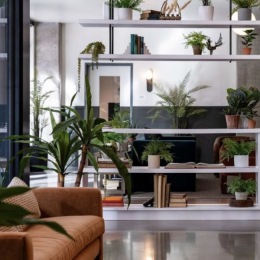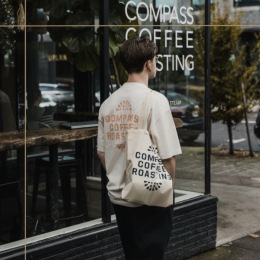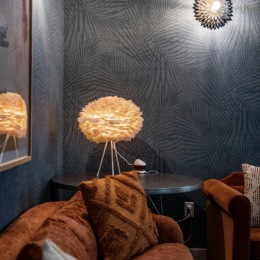What Makes Industrial Style Loft Apartments So Captivating
Industrial style loft apartments represent one of the most distinctive and sought-after housing options in modern urban living. These converted warehouse and factory spaces offer a unique blend of raw architectural character and contemporary comfort that has captivated city dwellers for decades.
Key characteristics of industrial style loft apartments:
- Open floor plans with minimal interior walls
- High ceilings typically ranging from 10-20 feet
- Large factory windows providing abundant natural light
- Exposed structural elements like brick walls, concrete floors, and metal beams
- Raw materials including steel, reclaimed wood, and exposed ductwork
- Spacious layouts often starting at 1,000+ square feet
- Adaptable living spaces that serve as blank canvases for personal design
The story of loft living began in 1960s New York, where artists pioneered this housing style by converting abandoned industrial buildings into live-work spaces. What started as a practical solution for creatives seeking large, open areas evolved into a coveted lifestyle choice that celebrates the marriage of industrial heritage with modern urban living.
These spaces offer something traditional apartments simply cannot: character, flexibility, and a sense of living within history. The exposed brick walls tell stories of manufacturing past, while soaring ceilings and massive windows create an atmosphere of openness and possibility.
However, loft living isn't without its considerations. The same open layouts that provide flexibility can present challenges with noise, privacy, and storage. Yet for many urban dwellers, these trade-offs are worthwhile for the unique aesthetic and spatial freedom that only an industrial loft can provide.

The Origins of Loft Living: From Factory Floors to Fashionable Homes
The story of industrial style loft apartments begins in the mid-20th century as manufacturing industries declined, leaving massive industrial buildings empty. In New York City's SoHo, for example, these abandoned structures became a fire hazard.
In the 1960s, artists seeking large work and living areas began moving into these vacant warehouses. The spaces lacked basic amenities but offered something unique in the city: enormous layouts with soaring ceilings and massive windows that flooded rooms with natural light.
Initially, this was not legal, as the buildings weren't zoned for residential use. However, the artists organized, forming groups like The SoHo Artists Association to advocate for their right to live and work in these converted spaces. Their efforts led to a 1971 New York law legalizing residential living for certified artists in manufacturing buildings. This decision sparked a global trend in adaptive reuse, changing urban living.
What began as a practical solution for artists quickly became a desirable lifestyle. As these neighborhoods filled with creative energy, they attracted others drawn to the unique aesthetic and spacious layouts, establishing the industrial loft as a symbol of sophisticated urban living.
Hard Lofts vs. Soft Lofts
As loft living gained popularity, a distinction emerged between two different types of industrial style loft apartments. Understanding this difference helps explain the variety you'll find in today's market.
| Feature | Hard Lofts | Soft Lofts |
|---|---|---|
| Origin | Authentic warehouse conversions from actual industrial buildings | New construction designed to mimic industrial aesthetics |
| Materials | Original brick walls, concrete floors, exposed steel beams, and authentic ductwork | Industrial-inspired finishes with modern materials |
| Layout | Unique, often irregular floor plans based on original building structure | More standardized layouts with industrial design elements |
| Character | Genuine historical features with imperfections and quirks | Clean, polished industrial look with modern conveniences |
| Amenities | May require creative solutions for modern needs | Built-in modern amenities and systems |
Hard lofts are authentic conversions of warehouses and factories. They retain original character with genuine exposed brick, concrete floors, and unique layouts dictated by the building's industrial past.
Soft lofts are newly constructed buildings that mimic the industrial aesthetic. They offer high ceilings, large windows, and industrial-inspired finishes, but with modern amenities and more conventional layouts.
Both styles are appealing. Hard lofts offer genuine history and character, while soft lofts provide the industrial look with modern comfort.
Live-Work Lofts
A practical application of loft living is the live-work unit, zoned for both residential and commercial use. These spaces are ideal for entrepreneurs, artisans, and creative professionals who benefit from combining their home and workspace.
The open floor plans allow for flexible arrangements, such as a photography studio that doubles as a living room or a dedicated workshop area. This setup is an attractive alternative to a separate home office in a traditional apartment.
Zoning regulations for live-work units vary by location and can be complex, governing business types and space allocation. It's important to understand local laws and any restrictions before committing to this type of arrangement.
For those drawn to the industrial aesthetic but preferring traditional residential zoning, Modern Design Apartments can offer similar visual appeal with the convenience of standard residential living.
Defining Features of Industrial Style Loft Apartments
An industrial style loft apartment celebrates the beauty of its working past. Instead of hiding raw materials and architectural bones, these spaces showcase them as design features. This approach creates an environment that feels both historic and modern. You can see this philosophy in action when you View our Gallery.
Architectural hallmarks of industrial style loft apartments
The character of industrial style loft apartments comes directly from their factory origins. These buildings were designed for function, which resulted in some of today's most striking residential spaces.
- High ceilings, often 10 to 20 feet, were built to house machinery and now create an incredible sense of space.
- Large windows, sometimes floor-to-ceiling, were designed for light on factory floors and now keep modern lofts bright and airy.
- Open floor plans were a necessity for production lines and now offer residents the freedom to create their own living zones.
- Exposed brick walls add warmth, texture, and a sense of history that drywall cannot replicate.
- Concrete floors, once purely practical, offer a sleek, durable, and low-maintenance design element when polished.
- Wood beams and columns are massive structural elements that add authentic character.
- Exposed ductwork and pipes are celebrated as part of the industrial aesthetic rather than being hidden.
- Mezzanines take advantage of high ceilings to add living space, such as a bedroom or office, without sacrificing the open feel.
Common materials and finishes
The materials in industrial style loft apartments tell a story of strength and honest craftsmanship.
- Steel is found in structural beams, window frames, and staircases, providing the backbone of the industrial design.
- Reclaimed wood adds warmth and history, often used for flooring or as an accent to soften harder elements. For inspiration on incorporating exposed brick, check out Brickwork inside the home.
- Concrete is used for more than just floors; it appears in countertops and accent walls with either rough or polished finishes.
- Iron, especially cast iron, is seen in original columns and decorative details, showcasing historical craftsmanship.
- Glass is used for large windows and modern partitions to maximize light and maintain an open feel.
- Matte finishes on metals and fixtures maintain the understated, utilitarian appeal of the industrial style.
The Loft Lifestyle: Advantages and Common Challenges
Living in an industrial style loft apartment offers a distinctive lifestyle that comes with both significant advantages and unique considerations.
The Allure of Open-Concept Living
The primary appeal of loft living is its sense of spaciousness. High ceilings and generous square footage create an expansive feel, while massive windows provide abundant natural light, making the space feel bright and connected to the outdoors.
The adaptability of the open-concept layout is another major draw. It's a blank canvas for residents to arrange furniture and define living zones freely. This flexibility, combined with the inherent character from exposed brick and beams, makes each loft unique. These open areas are also perfect for entertaining, allowing for a natural social flow. For inspiration, explore Modern Apartment Living Room Design.
Navigating the Challenges
While the allure is strong, loft living has practical challenges that can be managed with creative planning.
- Noise transmission: Open floor plans and hard surfaces cause sound to travel. Soft furnishings like rugs, curtains, and upholstered furniture help absorb sound and reduce echo.
- Privacy concerns: The lack of walls requires creative solutions. Room dividers like tall bookshelves, screens, or fabric panels can define spaces like bedrooms or offices without sacrificing the open feel.
- Storage challenge: Lofts often lack built-in closets. The solution is to use vertical space with tall shelving and multi-functional furniture with hidden storage. Under-bed storage systems are also effective.
- Temperature regulation: The large volume of space can make heating and cooling the entire area a consideration. Mindful climate control and strategic furniture placement can help maintain a comfortable temperature.
Decorating Your Industrial Loft: A Guide to Urban Chic
Decorating an industrial style loft apartment is about blending raw, industrial elements with comfort and warmth. The goal is to honor the building's history while creating an inviting home. For inspiration on blending modern comfort with industrial character, check out Modern Apartment Interior Design Ideas.
Key furniture choices for industrial style loft apartments
When choosing furniture, think of each piece as both functional and sculptural. In an open space, every item is on display.
- Minimalist furniture with clean lines prevents the space from feeling cluttered and allows the architecture to shine.
- Multi-functional pieces, like a storage ottoman or extendable dining table, make the most of your space.
- A leather sofa adds warmth and sophistication that complements the industrial aesthetic.
- Metal accents in tables, chairs, or shelving echo the building's structural elements.
- Reclaimed wood tables bring natural texture and warmth to balance cool metal and concrete.
- Tall, open bookshelves can act as room dividers, offering storage and separation while maintaining an open feel.
Creating Zones and Utilizing Vertical Space
The open floor plan requires you to create distinct zones that flow together.
- Area rugs are essential for defining spaces, such as a living room or dining area. They also add warmth and absorb sound.
- Furniture grouping creates intentional gathering spots. Arrange seating to encourage conversation or to take advantage of a view.
- Room dividers like sliding barn doors or screens offer flexible privacy without building permanent walls.
- Use vertical space with floating shelves and tall bookcases to draw the eye upward and add storage.
Lighting Your Loft
Lighting in an industrial style loft apartment creates atmosphere and defines areas.
- Maximize natural light by using minimal window treatments like simple roller shades or linen curtains.
- Statement pendant lighting takes advantage of high ceilings, acting as sculptural elements over a kitchen island or dining table.
- Track lighting offers flexibility to highlight artwork or architectural features, fitting the industrial aesthetic perfectly.
- Create layered lighting schemes by combining ambient (overall), task (for activities), and accent (for features) lighting to set the right mood.
Frequently Asked Questions about Industrial Lofts
What defines an industrial loft apartment?
An industrial loft apartment is a residential space converted from a former industrial or commercial building, like a warehouse or factory. Key features include open floor plans, high ceilings, large factory windows, and exposed architectural elements like brick walls, concrete floors, and visible ductwork. This style celebrates the building's industrial heritage.
Who is an industrial loft apartment best suited for?
Industrial style loft apartments are best suited for those who value space, light, and character. This includes:
- Creative professionals like artists and designers who need large, open live-work areas.
- Entrepreneurs and remote workers who can create flexible home offices.
- People who love to entertain, thanks to the open-concept layouts.
- Anyone who appreciates unique design and a home with built-in personality.
What are the most common challenges of living in a loft?
The most common challenges of loft living have creative solutions:
- Sound: Open layouts and hard surfaces can create echoes. Soft furnishings like rugs and curtains help absorb sound.
- Privacy: With minimal walls, privacy requires thoughtful planning. Room dividers like bookshelves or screens can create distinct zones.
- Storage: Lofts often lack built-in closets. Vertical storage solutions and multi-functional furniture are key. Under-bed storage systems are also very useful.
- Temperature Regulation: The large volume of space can be a consideration for heating and cooling. Mindful climate control can help manage this.
- Amenities: Authentic conversions may lack some modern amenities, but they are often located in vibrant neighborhoods.
Conclusion
The magic of industrial style loft apartments lies in their remarkable ability to tell two stories at once - honoring the gritty, productive past while creating spaces perfectly suited for modern living. These converted warehouses and factories have evolved from necessity-driven artist studios in 1960s SoHo to some of today's most coveted urban homes.
What makes these spaces so compelling is their honest celebration of history. Every exposed brick wall whispers tales of manufacturing heritage, while soaring ceilings and massive windows create an atmosphere of endless possibility. The raw materials - steel, concrete, reclaimed wood - serve as a sophisticated backdrop that invites personal expression without demanding it.
Living in an industrial loft means accepting both its gifts and its quirks. Yes, sound travels differently in these open spaces, and privacy requires creative solutions. But in return, you get something truly special: a home with genuine character, abundant natural light, and the flexibility to reinvent your space as your life evolves.
For those drawn to this distinctive lifestyle, finding the right balance between authentic industrial charm and modern comfort is key. The Miller Apartments by Flats® understands this balance perfectly. Located in Vancouver's vibrant Waterfront neighborhood, The Miller honors the area's industrial roots while providing all the conveniences today's residents expect - from wellness amenities to thoughtfully designed living spaces.
Whether you're an artist needing studio space, an entrepreneur wanting a live-work environment, or simply someone who appreciates unique design, industrial style loft apartments offer something conventional homes cannot: the chance to live within history while writing your own story. Explore our modern design apartments and find how industrial inspiration can create the perfect foundation for contemporary living.










